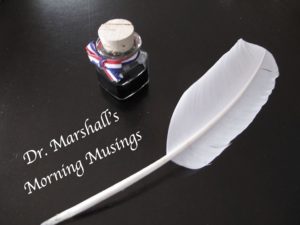Digital Tech and Learning
Here is one worth reading. Martin Kutscher, an Assistant Clinical Professor of Pediatrics and Neurology at the NYU College of Medicine, took time to write a short but valuable article that answers a question (or questions) that many parents and teachers are asking: Does reading on a screen interfere with in-depth learning?
And the answer is YES!!!!! Most of us knew (or assumed) this. If you or your child has ever had to use a digital text, you know how frustrating it can be. You can’t thumb through it; it takes time to find things. You can’t just flip through it to look for things and you can’t “hold” a page with whatever heavy object (a stapler, a coffee cup) is nearby. But those are just the mechanics. The real problems begin when kids try to learn from digital text. Dr. Kutscher lists four:
- Digital reading lacks touch. Reading from a screen removes the essential element of touch. Reading specialists have known for years that reading is multisensory. There is something about touching the page, running your fingers across the paper that increases our attention, our immersion in it, and our connection to it.
- Digital reading is disorienting. The screen makes it harder to navigate and orient yourself. This is especially true with hypertext that allows and encourages us to jump from page to page with those active links. Research shows that we comprehend more when we read linear text than when we read text peppered with (and distracted by) those links. Also, it is harder to visualize where information is. When we’re reading a book, we can say “I remember seeing that at the top of the right page about four or five pages ago. This is especially problematic with long digital articles that are a continuous scroll and not broken into pages. And the smaller the screen the worse it is. So, beware of trying to do serious work on a cell phone.
- Digital reading is shallow reading. There is a growing body of research suggesting that when students rely on digital reading, they are simply scanning for specific pieces of information. That’s okay if that’s all you want to do. But studies also show that students prefer printed materials when they want a deeper understanding.
- Digital reading is distracting. I am going to quote Dr. Kutscher directly here: “90% of students felt that they were more likely to be multi-tasking while reading digitally, while only 1% felt that a hardcopy would make them more likely to multi-task. 9% felt the medium (electronic or paper) didn’t matter when it came to multi-tasking.” That means that 89% of students prefer hard copy over a digital version. In another study, 92% of US students said they preferred printed copy not just for longer school work, but also for longer pleasure reading.
So, what are parents and students to do as schools (and the costs of printed books) push students to digital texts? There are two things we can do immediately:
- Introduce children to the love of books early and encourage it often. There is something very different in holding, touching, and even smelling a book that cannot be replaced by a digital screen.
- Know that digital learning is shallow learning. It is perfectly okay for some things. We all love Google and the ease with which we can look things up. But deeper learning requires a different set of skills and, quite possibly, a different set of tools.
Treasure books. Despite all the advantages of digital resources, there is something special about holding a book or sheets of paper in your hands. There is some deeper connection that just can’t be replaced. We should cherish that difference, just as we cherish that convenience of our digital devices. Both are important and both have value.


About the author